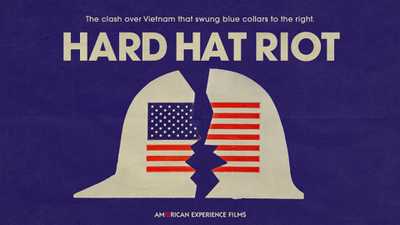How Presidential Running Mates Can Make or Break a Campaign
Four times candidates’ second-in-command picks surprised everyone

Every four years, the news media engage in endless speculation about the identities of presidential candidates’ running mates. The process is so enshrined, in fact, that it even has a name: Veepstakes.
Often the choice is predictable. Sometimes, though, there are VP shockers—running mate picks that no one, even the most astute political analysts, saw coming. Those surprise picks can be a huge boon to a campaign, building notoriety and momentum—or they can backfire, sending a candidate’s run into a tailspin. Here are a few of modern history’s most dramatic Veepstakes outcomes.
Sarah Palin

John McCain was behind in the polls against fellow Senator Barack Obama in 2008 when he made his surprising VP pick: small town mayor-turned-Alaska governor Sarah Palin, a choice no one predicted.
At first, public perception suggested McCain had made a bold choice with a political outsider whose gender, youth, and more conservative ideology helped balance the Republican ticket. McCain’s campaign raised record amounts and his poll numbers skyrocketed. However, it wasn’t long before Palin’s inexperience and lack of preparation came through in interviews and debates.
As the election season progressed, public opinion of Palin turned increasingly negative, and later analysis showed that she potentially cost the McCain campaign millions of votes—a significant margin in a close race like 2008.
Thomas Eagleton

In July 1972, Democratic candidate George McGovern announced his running mate: Missouri Senator Thomas Eagleton, a rising young political star whose anti-abortion views balanced McGovern’s ticket—or so the campaign hoped. Only 18 days later, things looked very different.
Right after the Democratic National Convention ended, news emerged about Eagleton’s medical history: three times during the 1960s he had been hospitalized for depression, and received electroshock treatment. McGovern stood by his choice at first, but political pressure mounted.
Ultimately, McGovern replaced Eagleton with former Peace Corps director Sargent Shriver. (The only other time in American history that a VP candidate had been removed from the ticket was in 1912, when President William Howard Taft replaced acting vice president James Sherman—and only because Sherman had died six days before the election. Spoiler: that presidential bid lost.)
McGovern’s campaign also never recovered from the last-minute switch, ultimately losing the election by the largest landslide in U.S. history. The scandal also forever changed the way potential VPs were vetted going forward, typically leading campaigns to do far more comprehensive research.
Spiro Agnew

In August 1968, presidential hopeful Richard Nixon made a 1 a.m. announcement about his vice presidential choice. Spiro Agnew was an unknown on no one’s list, a former county elected official in Maryland who had only been governor for two years.
At first, Agnew’s name became a campaign punchline. But Nixon’s choice proved smart. Positioned together on the Republican ticket as law-and-order candidates, Nixon and Agnew won the popular vote by a small margin but took the electoral college by 110 votes.
Once in office, Agnew did such a good job of reinforcing the president’s rhetoric that he became known as “Nixon’s Nixon.” But ultimately, the copycat routine went too far: just before the Watergate scandal ended Nixon’s presidency, Agnew himself stepped down to avoid his own separate charges of bribery, extortion, and tax fraud, becoming only the second U.S. vice president in history to resign.
Al Gore

Conventional wisdom says presidential candidates should balance the ticket by choosing VPs who complement them around various demographics, like age, identity, geography, and ideology. But in 1992, Bill Clinton threw decades of political strategy out the window and chose a running mate who was practically his mirror image.
Senator Al Gore was almost the exact same age as Clinton, also southern, and a centrist Democrat. In fact, Gore was so similar to the presidential candidate that Republicans dubbed him “Clinton’s tax-and-spend brother.” Gore was reportedly selected from a list of 40 potential candidates, with Clinton’s key considerations being that his running mate share his values, be prepared to serve as president immediately, and have the stamina required for a long, hard campaign.
It paid off. Together Clinton and Gore’s youthful energy carried the first all-baby-boomer presidential ticket to a big electoral college win, proving that sometimes doubling down is a savvy strategy.






